Themed collection 2016 Journal of Materials Chemistry B Hot Papers

Microneedle-based sensors for medical diagnosis
The field of microneedle sensors is reviewed discussing current trends and future applications.
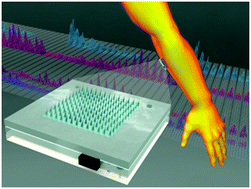
J. Mater. Chem. B, 2016,4, 1379-1383
https://doi.org/10.1039/C5TB02421H
Processing and surface modification of polymer nanofibers for biological scaffolds: a review
This review discusses existing and emerging polymeric nanofiber fabrication techniques, fiber surface modification via post-processing, and their combined effects on cell adhesion, proliferation, and migration.
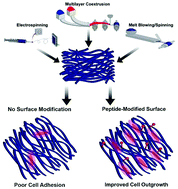
J. Mater. Chem. B, 2016,4, 5958-5974
https://doi.org/10.1039/C6TB01303A
Heterotypic supramolecular hydrogels
We reviewed heterotypic supramolecular hydrogels containing more than one component to illustrate their promise as soft biomaterials.
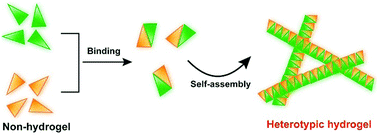
J. Mater. Chem. B, 2016,4, 5638-5649
https://doi.org/10.1039/C6TB01592A
Pluripotent stem cell derived hepatocytes: using materials to define cellular differentiation and tissue engineering
Pluripotent stem cell derived liver cells (hepatocytes) represent a promising alternative to primary tissue for biological and clinical applications.

J. Mater. Chem. B, 2016,4, 3433-3442
https://doi.org/10.1039/C6TB00331A
Oxygen delivering biomaterials for tissue engineering
Various technologies have been developed to increase oxygen delivery in vivo and enhance the effectiveness of tissue engineering strategies. The article provides an overview of the underlying mechanisms driving these technologies.
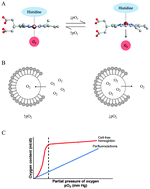
J. Mater. Chem. B, 2016,4, 3422-3432
https://doi.org/10.1039/C5TB02635K
Bioinspired materials for regenerative medicine: going beyond the human archetypes
Living organisms are skilful innovators and fabricators of materials, driven by the forces of evolution. We describe the translation process between natural material innovations and human tissue engineering.
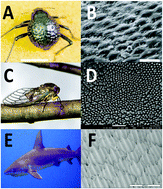
J. Mater. Chem. B, 2016,4, 2396-2406
https://doi.org/10.1039/C5TB02634B
Nanostructure-based surface-enhanced Raman scattering biosensors for nucleic acids and proteins
Nanostructure-based SERS platforms have been developed for nucleic acid and protein detection ranging from label-free, labeled and multiplex analyses.
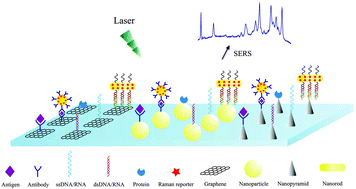
J. Mater. Chem. B, 2016,4, 1757-1769
https://doi.org/10.1039/C5TB02135A
Programmed planar-to-helical shape transformations of composite hydrogels with bioinspired layered fibrous structures
Composite hydrogels with both in-plane and out-of-plane structural gradient are fabricated by multi-step photolithography and exhibit programmed deformations and shape transformations under stimulation.
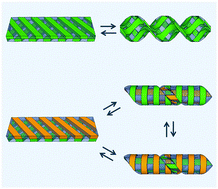
J. Mater. Chem. B, 2016,4, 7075-7079
https://doi.org/10.1039/C6TB02178F
Viscosity-controlled printing of supramolecular-polymeric hydrogels via dual-enzyme catalysis
Hybrid hydrogels based on a guanidinium-containing oligopeptide are prepared via dual-enzyme-triggered reactions. An extended time window is available for in situ viscosity-controlled 3D printing.
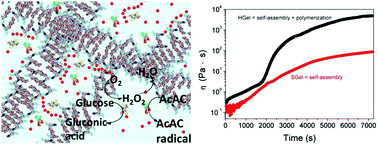
J. Mater. Chem. B, 2016,4, 6302-6306
https://doi.org/10.1039/C6TB01792D
Facile green synthesis of calcium carbonate/folate porous hollow spheres for the targeted pH-responsive release of anticancer drugs
Calcium carbonate/folate porous hollow spheres were prepared in a facile manner and used for the targeted delivery and pH-responsive sustained release of anticancer drugs.
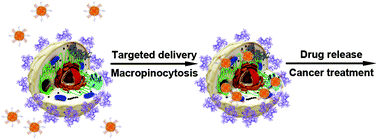
J. Mater. Chem. B, 2016,4, 5650-5653
https://doi.org/10.1039/C6TB01483F
A novel method for the synthesis of 1,2-benzisoxazoline-3-one and its application to hypochlorite recognition
The reaction of salicylhydroxamic acid with hypochlorite produces 1,2-benzisoxazoline-3-one, a heterocycle that contains a fluorophore.
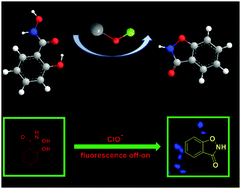
J. Mater. Chem. B, 2016,4, 5101-5104
https://doi.org/10.1039/C6TB01392A
Ultrasensitive ELISA+ enhanced by dendritic mesoporous silica nanoparticles
Ultrasensitive ELISA+ assay has been developed with a 2000 times enhancement of detection sensitivity compared to the commercial ELISA kit in serum.
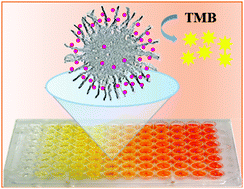
J. Mater. Chem. B, 2016,4, 4975-4979
https://doi.org/10.1039/C6TB01023G
High performance Cu/Cu2O nanohybrid electrocatalyst for nonenzymatic glucose detection
Described herein are Cu/Cu2O nanohybrids prepared via potential oscillation, and their high performance for nonenzymatic glucose detection applications.
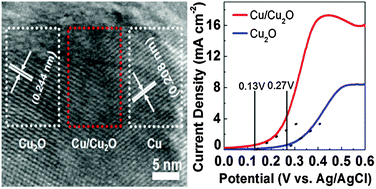
J. Mater. Chem. B, 2016,4, 4652-4656
https://doi.org/10.1039/C6TB01158F
Target-triggered autonomous assembly of DNA polymer chains and its application in colorimetric nucleic acid detection
One-dimensional DNA polymer chains were obtained based on the catalyzed hairpin assembly and sticky end self-assembly, which led to a signal amplified colorimetric nucleic acid assay.
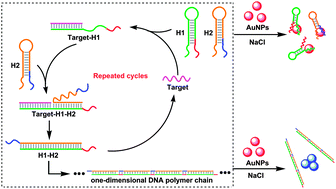
J. Mater. Chem. B, 2016,4, 3191-3194
https://doi.org/10.1039/C6TB00029K
Fluorinated smart micelles as enzyme-responsive probes for 19F-magnetic resonance
Labeling smart PEG–dendron hybrids with fluorine-containing groups transform their micelles into enzyme-responsive probes for 19F-magnetic resonance.
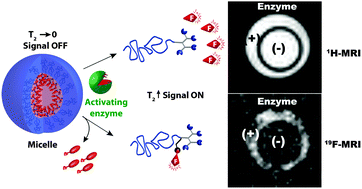
J. Mater. Chem. B, 2016,4, 3037-3042
https://doi.org/10.1039/C5TB02445E
Cobalt disulfide nanowires as an effective fluorescent sensing platform for DNA detection
Cobalt disulfide nanowires are synthesized in solution using a facile two-step hydrothermal method for the first time and applied as an effective sensing platform for nucleic acid detection.
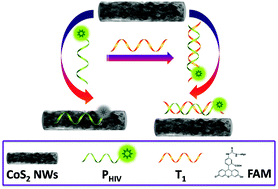
J. Mater. Chem. B, 2016,4, 2860-2863
https://doi.org/10.1039/C6TB00087H
The first visually observable three-mode antibiotic switch and its relative 3D printing assisted applications
To regulate antibiotic treatments, the first visible three-mode antibiotic switch with residual removable characteristics was realized in this report.

J. Mater. Chem. B, 2016,4, 2544-2547
https://doi.org/10.1039/C6TB00576D
N-dots as a photoluminescent probe for the rapid and selective detection of Hg2+ and Ag+ in aqueous solution
New N-dots for the sensitive and selective detection of Hg2+ and Ag+ without surface modifications.
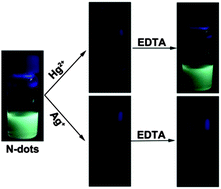
J. Mater. Chem. B, 2016,4, 2086-2089
https://doi.org/10.1039/C5TB02628H
Versatile rare-earth oxide nanocomposites: enhanced chemo/photothermal/photodynamic anticancer therapy and multimodal imaging
A novel theranostic nanocomposite was assembled by a stepwise modification of rare-earth oxide nanoparticles; both the photothermal and photodynamic therapy effects are enhanced due to the effective light protection of a two-photon sensitized Eu3+ complex.
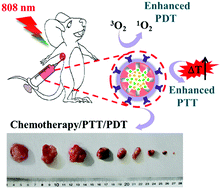
J. Mater. Chem. B, 2016,4, 7832-7844
https://doi.org/10.1039/C6TB02244H
A novel triphenylamine-BODIPY dendron: click synthesis, near-infrared emission and a multi-channel chemodosimeter for Hg2+ and Fe3+
A novel near-infrared emission triphenylamine-BODIPY dendron for Hg2+ and Fe3+ detection, fluorescent nanoparticle and living cell imaging.
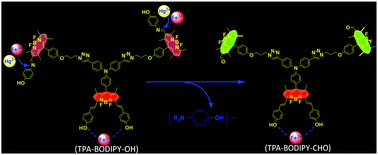
J. Mater. Chem. B, 2016,4, 7549-7559
https://doi.org/10.1039/C6TB02469F
Phase-changeable and bubble-releasing implants for highly efficient HIFU-responsive tumor surgery and chemotherapy
A multifunctional poly(lactic-co-glycolic acid) (PLGA)-based solid implant was constructed within a tumor for highly efficient HIFU-responsive tumor surgery and chemotherapy.
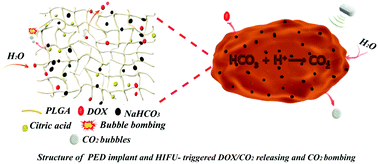
J. Mater. Chem. B, 2016,4, 7368-7378
https://doi.org/10.1039/C6TB01861K
Regulation of local bone remodeling mediated by hybrid multilayer coating embedded with hyaluronan-alendronate/BMP-2 nanoparticles on Ti6Al7Nb implants
Hyaluronate-alendronate/BMP-2 nanoparticles were inserted into Gel/Chi multilayers on Ti6Al7Nb for enhancing BMP-2 stability and promoting local osteogenesis under osteoporosis.
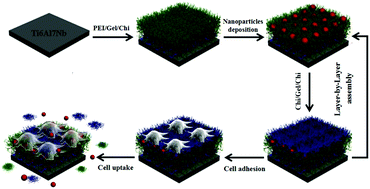
J. Mater. Chem. B, 2016,4, 7101-7111
https://doi.org/10.1039/C6TB01779G
Regulation of the growth, morphology, mechanical properties and biocompatibility of natural polysaccharide-based multilayers by Hofmeister anions
Herein the optimization of the physicochemical properties and surface biocompatibility of polyelectrolyte multilayers of the natural, biocompatible and biodegradable, linear polysaccharides hyaluronan and chitosan by Hofmeister anions was systematically investigated.
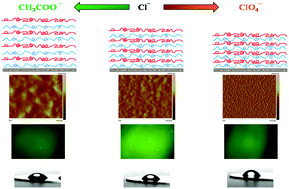
J. Mater. Chem. B, 2016,4, 7092-7100
https://doi.org/10.1039/C6TB01638C
Covalent crosslinking of graphene oxide and carbon nanotube into hydrogels enhances nerve cell responses
Chemically crosslinking GOa and CNTpega followed by in situ reduction fabricated a conductive rGOa–CNTpega–OPF hydrogel that strongly stimulated neurite growth.

J. Mater. Chem. B, 2016,4, 6930-6941
https://doi.org/10.1039/C6TB01722C
Overcoming ABCG2-mediated multidrug resistance by a mineralized hyaluronan–drug nanocomplex
A multicomponent nanocomplex generated by hyaluronan-based biomineralization was successfully employed to combat ABCG2-mediated multidrug resistance.
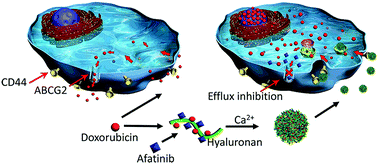
J. Mater. Chem. B, 2016,4, 6652-6661
https://doi.org/10.1039/C6TB01545J
Synthesis of EDTA-assisted CeVO4 nanorods as robust peroxidase mimics towards colorimetric detection of H2O2
CeVO4 nanorods were developed as novel, simple and highly sensitive biomimetic catalysts and used for colorimetric detection of H2O2.
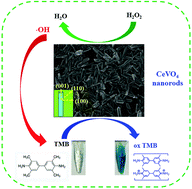
J. Mater. Chem. B, 2016,4, 6316-6325
https://doi.org/10.1039/C6TB01881E
Competitive ligand exchange of crosslinking ions for ionotropic hydrogel formation
We describe a new approach to form hydrogels of ionotropic polymers using competitive displacement of chelated ions. This strategy enables control of ion release kinetics within an aqueous polymer solution and thus control over gelation kinetics across a wide range of pH.

J. Mater. Chem. B, 2016,4, 6175-6182
https://doi.org/10.1039/C6TB01812B
Graphene oxide nanohybrid that photoreleases nitric oxide
Covalent functionalization of graphene oxide with a suitable NO photodonor leads to a nanohybrid material that releases NO under visible light and has potential applications in biomedical research.
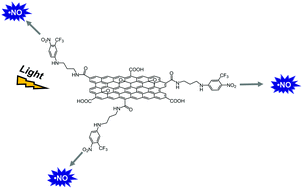
J. Mater. Chem. B, 2016,4, 5825-5830
https://doi.org/10.1039/C6TB01599A
A comparative study of the mechanical properties of hybrid double-network hydrogels in swollen and as-prepared states
Significant efforts have been made to develop very tough hydrogels at both swelling and as-prepared states towards many scientific and industrial applications.
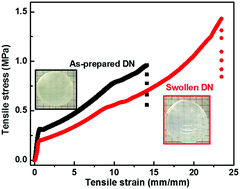
J. Mater. Chem. B, 2016,4, 5814-5824
https://doi.org/10.1039/C6TB01511E
A gold nanostar based multi-functional tumor-targeting nanoplatform for tumor theranostic applications
A gold nanostar based multi-functional tumor-targeting nanoplatform (DOX/GNSTs–PEG/PEI–FA) for tumor theranostic applications.
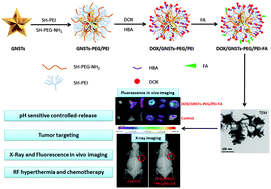
J. Mater. Chem. B, 2016,4, 5895-5906
https://doi.org/10.1039/C6TB01304J
Electron transfer driven highly valent silver for chronic wound treatment
This paper shows that reducing the dose of silver, additionally conferring electron transfer potential, could simultaneously achieve good biocompatibility and strong bactericidal ability without introducing extra chemical residuals for chronic wound treatment.
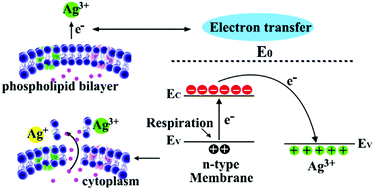
J. Mater. Chem. B, 2016,4, 5729-5736
https://doi.org/10.1039/C6TB01339B
Preparation of gelatin/Fe3O4 composite scaffolds for enhanced and repeatable cancer cell ablation
Gelatin/Fe3O4 composite scaffolds with controlled pore structures were prepared by a facile ice particulate templating method and they showed great potential for near-infrared photothermal cancer therapy.
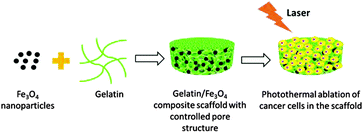
J. Mater. Chem. B, 2016,4, 5664-5672
https://doi.org/10.1039/C6TB01543C
Engineering DN hydrogels from regenerated silk fibroin and poly(N-vinylcaprolactam)
The development of biocompatible hydrogels that possess adequate elasticity and toughness to withstand mechanically active environments, remains a significant challenge for tissue engineering applications. In this study, a family of silk-based double network hydrogels have been fabricated that display elasticity closer to native cartilage.
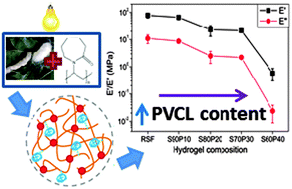
J. Mater. Chem. B, 2016,4, 5519-5533
https://doi.org/10.1039/C6TB01055E
A robust double-network hydrogel with under sea water superoleophobicity fabricated via one-pot, one-step reaction
A robust double-network (DN) hydrogel fabricated by a one-pot, one-step reaction is reported.
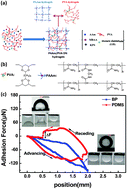
J. Mater. Chem. B, 2016,4, 4662-4666
https://doi.org/10.1039/C6TB00818F
Dual responsive mesoporous silica nanoparticles for targeted co-delivery of hydrophobic and hydrophilic anticancer drugs to tumor cells
Dual responsive mesoporous silica nanoparticles integrating stepwise tumor targeting and co-delivery of multiple anticancer drugs were developed to attenuate the drug resistance of cancer cells.
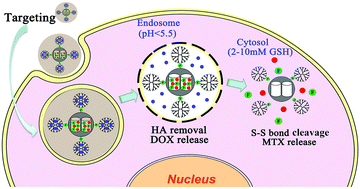
J. Mater. Chem. B, 2016,4, 4382-4388
https://doi.org/10.1039/C6TB00694A
Surface modification with E-cadherin fusion protein for mesenchymal stem cell culture
To effectively expand human mesenchymal stem cells (hMSCs) in vitro without affecting their innate biological properties, a fusion protein (hE-cad-Fc) was fabricated and used as a biomimetic matrix for MSC culture surface modification.
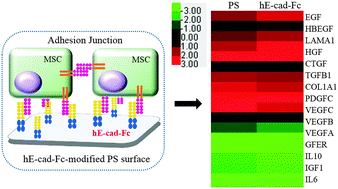
J. Mater. Chem. B, 2016,4, 4267-4277
https://doi.org/10.1039/C6TB00765A
Nanostrontium ranelate incorporated injectable hydrogel enhanced matrix production supporting chondrogenesis in vitro
An injectable strontium ranelate nanoparticle-loaded composite gel provides a required environment for chondrogenesis, supplemented with the controlled release of strontium ranelate.
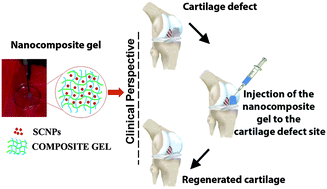
J. Mater. Chem. B, 2016,4, 4092-4103
https://doi.org/10.1039/C6TB00684A
Facile fabrication of amphiphilic AIE active glucan via formation of dynamic bonds: self assembly, stimuli responsiveness and biological imaging
A one-pot strategy has been developed for the preparation of stimuli responsive AIE active glucan through formation of a dynamic Schiff base and a phenyl borate.
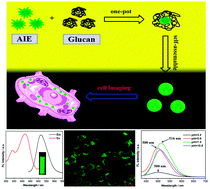
J. Mater. Chem. B, 2016,4, 4033-4039
https://doi.org/10.1039/C6TB00776G
Azo-functionalized Fe3O4 nanoparticles: a near-infrared light triggered drug delivery system for combined therapy of cancer with low toxicity
A smart drug delivery system based on thermo-sensitive molecule was designed. When exposed to near infrared (NIR) light, Fe3O4 nanoparticles transfer the light to heat rapidly, leading to the cleavage of the Azo linker and the release of DOX.
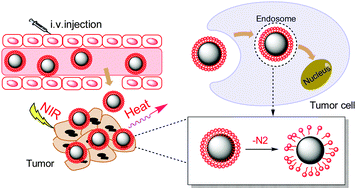
J. Mater. Chem. B, 2016,4, 3660-3669
https://doi.org/10.1039/C5TB02704G
Soy protein-directed one-pot synthesis of gold nanomaterials and their functional conductive devices
Gold nanomaterials were synthesized via a facile and green method, using soy protein isolate as reductant, template, and capping agent.
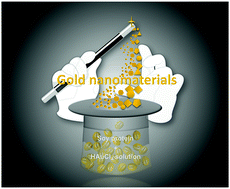
J. Mater. Chem. B, 2016,4, 3643-3650
https://doi.org/10.1039/C6TB00616G
Laminar ventricular myocardium on a microelectrode array-based chip
Micromolded gelatin can be used to engineer laminar human myocardium on microelectrode array chips for electrophysiological studies and drug testing.
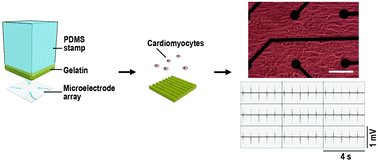
J. Mater. Chem. B, 2016,4, 3534-3543
https://doi.org/10.1039/C6TB00324A
Development of a cell delivery system using alginate microbeads for tissue regeneration
Alginate microbeads incorporating adipose-derived stem cells (ASCs) have potential for delivering viable cells capable of facilitating tissue regeneration.
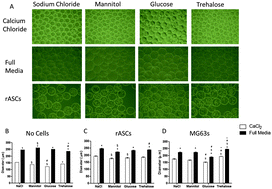
J. Mater. Chem. B, 2016,4, 3515-3525
https://doi.org/10.1039/C6TB00035E
“Stealthy” chitosan/mesoporous silica nanoparticle based complex system for tumor-triggered intracellular drug release
A pH- and redox-sensitive “stealthy” chitosan/mesoporous silica nanoparticle-based complex system is prepared for tumor-triggered intracellular drug release.
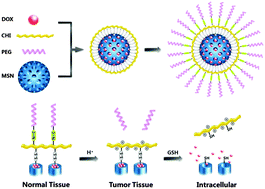
J. Mater. Chem. B, 2016,4, 3387-3397
https://doi.org/10.1039/C5TB02548F
Tunable self-assembly of Irinotecan-fatty acid prodrugs with increased cytotoxicity to cancer cells
A small library of Irinotecan-fatty acid prodrugs which can self-assemble into different nanostructures is constructed to achieve enhanced cytotoxicity.
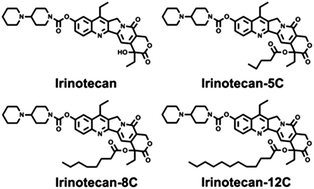
J. Mater. Chem. B, 2016,4, 3286-3291
https://doi.org/10.1039/C6TB00612D
The synergetic effect of nano-structures and silicon-substitution on the properties of hydroxyapatite scaffolds for bone regeneration
Control over the morphology and chemical composition of hydroxyapatite (HAp) bioceramic scaffolds is of great importance for their applications.

J. Mater. Chem. B, 2016,4, 3313-3323
https://doi.org/10.1039/C6TB00187D
Anticoagulant sodium alginate sulfates and their mussel-inspired heparin-mimetic coatings
We synthesized novel sodium alginate sulfates (SASs) with different sulfation degrees. All the SASs, DA-g-SASs, and coated substrates had good anticoagulant properties and biocompatibilit.
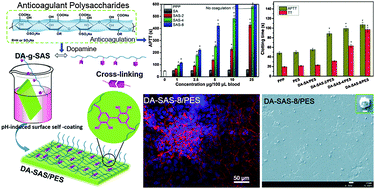
J. Mater. Chem. B, 2016,4, 3203-3215
https://doi.org/10.1039/C6TB00636A
Diblock- and triblock-copolymer based mixed micelles with high tumor penetration in vitro and in vivo
A series of self-assembled mixed micelles composed of TPGS and Pluronics were fabricated and their cellular uptake and exocytosis behaviors were studied in 2D cell and 3D tumor spheroid models.
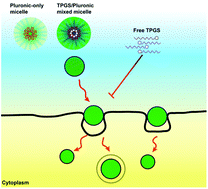
J. Mater. Chem. B, 2016,4, 3216-3224
https://doi.org/10.1039/C6TB00508J
Microgels with tunable affinity-controlled protein release via desolvation of self-assembled peptide nanofibers
We demonstrate an approach to fabricate microgels from self-assembled peptide nanofibers via desolvation. Proteins can be co-desolvated with nanofibers to create protein-loaded microgels. Modifying nanofibers with a protein-binding ligand provides tunable affinity-controlled protein release.
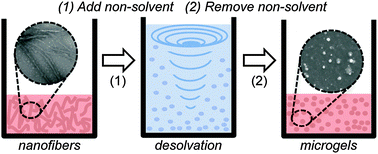
J. Mater. Chem. B, 2016,4, 3054-3064
https://doi.org/10.1039/C5TB02446C
Microfluidically fabricated pH-responsive anionic amphiphilic microgels for drug release
Novel amphiphilic microgels with hydrophobic and hydrophilic monomer units on the polymer chains were fabricated with an on-chip polymerisation methodology using a novel chip design.
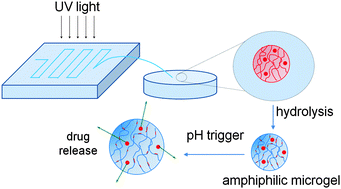
J. Mater. Chem. B, 2016,4, 3086-3093
https://doi.org/10.1039/C5TB02378E
Targeting mitochondrial DNA with a two-photon active Ru(II) phenanthroline derivative
A novel phenanthroline Ru(II) derivative for targeting mitochondrial DNA was designed and its potential applications in biological processes were highlighted.
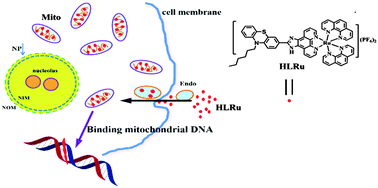
J. Mater. Chem. B, 2016,4, 2895-2902
https://doi.org/10.1039/C6TB00433D
3D-printed bioceramic scaffolds with a Fe3O4/graphene oxide nanocomposite interface for hyperthermia therapy of bone tumor cells
Magnetic scaffolds display prominent magnetothermal ability, and can effectively kill tumor cells in an alternating magnetic field and improve bone formation ability in vitro.
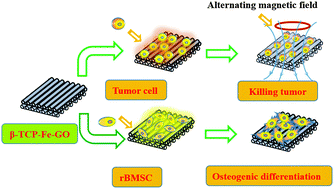
J. Mater. Chem. B, 2016,4, 2874-2886
https://doi.org/10.1039/C6TB00390G
A multifunctional core–shell nanoplatform for enhanced cancer cell apoptosis and targeted chemotherapy
A novel multifunctional nanoplatform was designed based on the combination of silver nanoparticles (AgNPs) with nucleolin-targeted and doxorubicin (Dox)-loaded manganese dioxide (MnO2) nanosheets to induce enhanced cancer cell apoptosis and targeted chemotherapy.
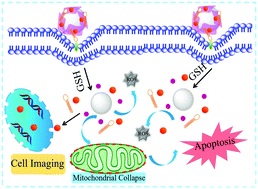
J. Mater. Chem. B, 2016,4, 2887-2894
https://doi.org/10.1039/C6TB00438E
Tracking translocation of glucan microparticles targeting M cells: implications for oral drug delivery
Model glucan microparticles (GMs) targeting M cells are employed to track translocation through M cell pathways as well as to various organs via the systemic circulation.
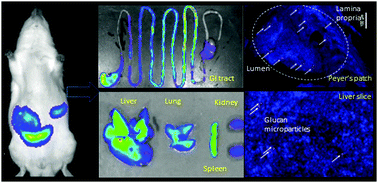
J. Mater. Chem. B, 2016,4, 2864-2873
https://doi.org/10.1039/C5TB02706C
Disulfide-crosslinked albumin hydrogels
Albumin hydrogels crosslinked by disulfide bonds between the protein's own thiol groups.
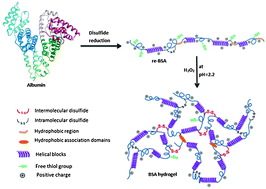
J. Mater. Chem. B, 2016,4, 2768-2775
https://doi.org/10.1039/C6TB00247A
Mussel-inspired coatings on Ag nanoparticle-conjugated carbon nanotubes: bactericidal activity and mammal cell toxicity
Silver nanoparticle (AgNP)-based nanohybrids have been proposed as efficient antimicrobial agents because of their robust bactericidal activity.
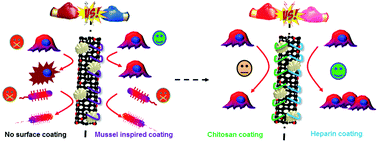
J. Mater. Chem. B, 2016,4, 2749-2756
https://doi.org/10.1039/C6TB00470A
Surface functionalized halloysite nanotubes decorated with silver nanoparticles for enzyme immobilization and biosensing
Illustrating the selective modification of the HNTs for the incorporation of AgNPs and site-specific covalent immobilization of the GOx enzymes.
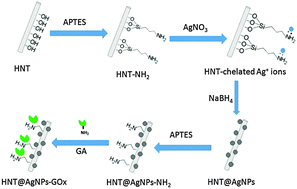
J. Mater. Chem. B, 2016,4, 2553-2560
https://doi.org/10.1039/C6TB00051G
A novel multifunctional biomimetic Au@BSA nanocarrier as a potential siRNA theranostic nanoplatform
A novel siRNA nanocarrier based on biomimetic Au@BSA nanoflowers is fabricated which could serve as a potential theranostic nanoplatform.
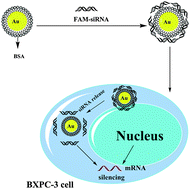
J. Mater. Chem. B, 2016,4, 2519-2526
https://doi.org/10.1039/C5TB02326B
Synthesis of a three-layered SiO2@Au nanoparticle@polyaniline nanocomposite and its application in simultaneous electrochemical detection of uric acid and ascorbic acid
A novel three-layered SiO2@AuNP@PANI nanocomposite was synthesized and adopted for the simultaneous electrochemical determination of uric acid and ascorbic acid.
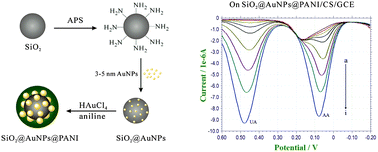
J. Mater. Chem. B, 2016,4, 2314-2321
https://doi.org/10.1039/C5TB02765A
The stimulation of osteogenic differentiation of embryoid bodies from human induced pluripotent stem cells by akermanite bioceramics
We report the stimulation of osteogenic differentiation of embryoid body (EB) cells derived from human induced pluripotent stem cells (iPSCs) by akermanite bioceramics.
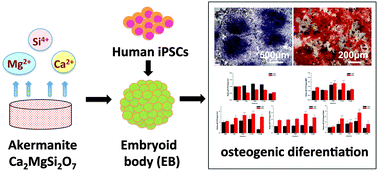
J. Mater. Chem. B, 2016,4, 2369-2376
https://doi.org/10.1039/C6TB00398B
Phosphorylated poly(sebacoyl diglyceride) – a phosphate functionalized biodegradable polymer for bone tissue engineering
This study demonstrates a simply powerful way to make therapeutic materials: using small functional units (phosphates) to control bioactivity (osteogenesis).
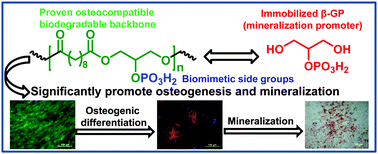
J. Mater. Chem. B, 2016,4, 2090-2101
https://doi.org/10.1039/C5TB02542G
Epitope imprinting enhanced IMAC (EI-IMAC) for highly selective purification of His-tagged protein
Selectivity of epitope imprinted sites is introduced on the IMAC surface through epitope surface imprinting. The obtained epitope imprinting enhanced IMAC (EI-IMAC) could purify His-tagged proteins with high selectivity without any major interference from the host proteins.
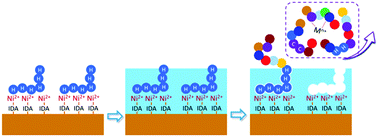
J. Mater. Chem. B, 2016,4, 1960-1967
https://doi.org/10.1039/C5TB02505B
MMP-responsive theranostic nanoplatform based on mesoporous silica nanoparticles for tumor imaging and targeted drug delivery
A novel mesoporous silica-based multifunctional theranostic nanoplatform was reported, which can not only achieve MMP-2-activated fluorescence imaging, but also realize tumor targeted drug delivery and drug release indicating.
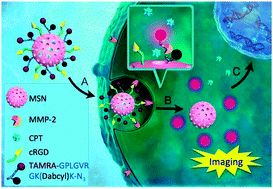
J. Mater. Chem. B, 2016,4, 1932-1940
https://doi.org/10.1039/C5TB02490K
Characterisation of nanoscale carbide precipitation in as-cast Co–Cr–W-based dental alloys
The results of the present study indicate the importance of local chemistry along with carbide precipitation in the optimization of alloy design for achieving desirable properties such as high strength, ductility, and corrosion resistance in dental Co–Cr-based cast alloys.
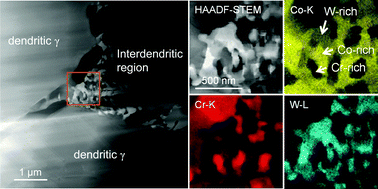
J. Mater. Chem. B, 2016,4, 1778-1786
https://doi.org/10.1039/C6TB00040A
Functionalizing micro-3D-printed protein hydrogels for cell adhesion and patterning
A versatile and dynamic photoconjugation platform is introduced that provides high, 3D spatial resolution for functionalizing micro-3D-printed (μ-3DP) hydrogels. Schwann cells are patterned on μ-3DP hydrogels precisely labeled with RGD, a cell adhesive peptide, demonstrating utility of this platform for cell culture applications.
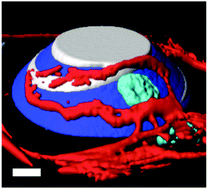
J. Mater. Chem. B, 2016,4, 1818-1826
https://doi.org/10.1039/C5TB02070K
Three label-free thrombin aptasensors based on aptamers and [Ru(bpy)2(o-mopip)]2+
The label free aptasensor based on an aptamer pair and [Ru(bpy)2(o-mopip)]2+–GO has been successfully applied to sandwich assays for thrombin detection.
![Graphical abstract: Three label-free thrombin aptasensors based on aptamers and [Ru(bpy)2(o-mopip)]2+](/en/Image/Get?imageInfo.ImageType=GA&imageInfo.ImageIdentifier.ManuscriptID=C5TB02032H&imageInfo.ImageIdentifier.Year=2016)
J. Mater. Chem. B, 2016,4, 1361-1367
https://doi.org/10.1039/C5TB02032H
Osmo-solidification of all-aqueous emulsion with enhanced preservation of protein activity
An “osmo-solidification” approach that solidifies all-aqueous emulsion droplets for encapsulating proteins with superior preservation of their activity.
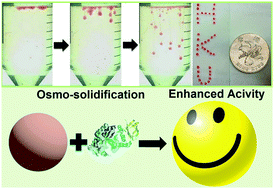
J. Mater. Chem. B, 2016,4, 1213-1218
https://doi.org/10.1039/C5TB02187A
A large-deformation phase transition electrothermal actuator based on carbon nanotube–elastomer composites
Large actuation occurs while the closed water is boiled to steam at an induced heating power. A closed liquid circulation system based on two of these actuators can work like a real heart.
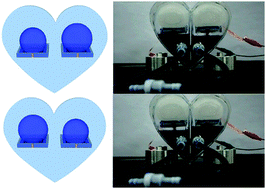
J. Mater. Chem. B, 2016,4, 1228-1234
https://doi.org/10.1039/C5TB02715B
Cellular endocytosis and trafficking of cholera toxin B-modified mesoporous silica nanoparticles
Mesoporous silica nanoparticles were functionalized with cholera toxin subunit B protein to influence their intracellular trafficking pathways.
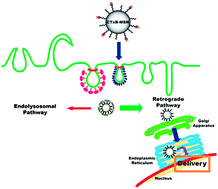
J. Mater. Chem. B, 2016,4, 1254-1262
https://doi.org/10.1039/C5TB02079D
A highly specific graphene platform for sensing collagen triple helix
We have designed a dye-labeled, highly positively charged single stranded collagen (ssCOL) peptide probe whose adsorption into GO quenches its fluorescence. The hybridization of the ssCOL probe with a complementary target sequence forms a triple stranded collagen (tsCOL) peptide, resulting in the retention of the fluorescence of the probe.
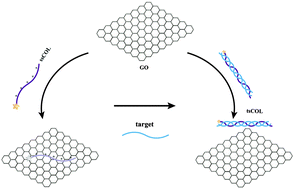
J. Mater. Chem. B, 2016,4, 1064-1069
https://doi.org/10.1039/C5TB02218E
Biomimetic gelatin methacrylamide hydrogel scaffolds for bone tissue engineering
The biomimetic GelMA scaffolds which have highly porous, interconnected macropores, and rough surface could promote ADSC to differentiate into osteoblasts and bone formation.
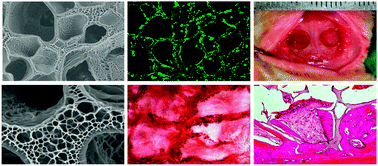
J. Mater. Chem. B, 2016,4, 1070-1080
https://doi.org/10.1039/C5TB02251G
About this collection
This on-going web collection features all the articles published in Journal of Materials Chemistry B in 2016 marked as HOT, as recommended by referees. Congratulations to all the authors whose articles are featured!